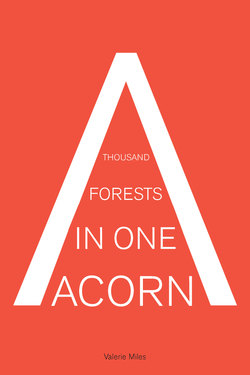Читать книгу A Thousand Forests in One Acorn - Valerie Miles - Страница 20
На сайте Литреса книга снята с продажи.
ОглавлениеAna María Matute was a very precocious writer. She was born in Barcelona on July 26, 1925 (“and not in 1926 as has been stubbornly insisted!”) into a family belonging to the petite bourgeoisie. Her father, don Facundo Matute, had established an umbrella factory on n° 60 Calle Urgell. The business led to his taking frequent trips to around Europe, which he returned from with all kinds of fantastic stories and gifts for the little Ana María (like the doll Gorogó, that ended up a part of her extensive body of literary work). These first fantasies led her to write and illustrate her first story when she was only five years old, while she was recovering from a serious renal infection. When she was eight years old, she fell ill again and her parents decided to put her under the care of her grandparents in Mansilla de la Sierra. That picturesque Riojan location became the landscape of her childhood, and the memories of those years and those people would be captured in many of her works, especially in Historias de la Artámila (1961) and in El río (1963).
That world was broken by the explosion of the civil war, a few days before her eleventh birthday. The brutal aggression that this superimposed on her childhood memories is reflected most of all in her early books, whose protagonists are children with a vision of the world that makes a distinction between the real (adult) world and fantasy, which she depicts with great psychological subtlety.
Educated in a religious French high school, while earning her bachelor’s, Ana María Matute broadened her academic formation by taking courses in music and painting, outlining what from that moment on would be her varied and intense intellectual activity. When she was seventeen she wrote her first novel, Pequeño teatro. She showed up at the Destino publishing house with the novel written in a notebook with a black oilcloth cover; Ignacio Agustí, the publishing director at the time, agreed, after several attempts, to meet with the young girl, and he suggested she type up the novel, and then he would read it. Two weeks later she submitted the typed (“at full speed!”) novel as well as several stories that would be published in Destino magazine. In 1948, Los Abel, her second novel, was a finalist for the Premio Nadal (won by Miguel Delibes).
In 1952, Matute married Ramón Eugenio Goicoechea (alias “the specimen”) and two years later her son Juan Pablo was born. Over the course of a decade, Matute became the breadwinner in the family with extraordinary literary production, and began winning important prizes like Premio Nadal, Premio Nacional de Literatura, and Premio Nacional de la Crítica. Leaving behind the realist vision of the literature of that time, she developed her own voice that moved between lyrical and sensorial, achieving a genuine mixture of social criticism and poetic message. As Pere Gimferrer has said of her: “She’s unlike any other author. Some have said she’s like Faulkner; actually it’s really that her way of being unlike anyone else makes you think about the way Faulkner was unlike anyone else.”
Her marriage fell apart in 1963 and Spanish law under Franco prohibited her from seeing her son, leaving her overcome with intense emotional suffering. She kept on writing anyway: Los soldados lloran de noche (1964) and the children’s story “El polizón del Ulises” (1965) and she completed the trilogy that began with Primera memoria, which was followed by Algunos muchachos (1964) and La trampa (1969). In 1976, Ana María Matute was nominated for the Nobel Prize in Literature and in 1984 she won the Premio Nacional de Literatura Infantil for “Sólo un pie descalzo.”
Then she met Julio Brocard, at whose side she lived several very happy years until he passed away the day she turned sixty-five. Once again, she kept on writing, aware that literature had been and would be “the savior lighthouse of many of her storms.” In 1996, she published Olvidado Rey Gudú (“the book I wanted to write ever since I was a girl, all of my obsessions are in it”), one of her most celebrated novels that, along with La torre vigía and Aranmanoth, make up a trilogy about a medieval court, with which she shows her literary versatility once again. That same year she was made a member of the Real Academia Española de la Lengua, occupying seat K, becoming the third woman inducted into the institution in its long three-hundred year history. In 2010 she was the third woman in history to receive the Premio Cervantes.
Translated into more than twenty-three languages and invited to teach at universities such as University of Indiana, University of Oklahoma, and Boston University, today Ana María Matute is one of the most personal voices in contemporary literature.
